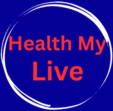
As summer 2025 unfolds, a new COVID-19 variant is making headlines, reminding us that the pandemic continues to evolve. Health experts are tracking this latest strain closely, noting its unique characteristics and potential impacts. Unlike earlier variants, this one appears to thrive in warmer temperatures, challenging the notion that COVID recedes entirely during summer months. Dr. Anika Patel, an infectious disease specialist at Johns Hopkins, explains, “This variant’s mutations allow it to partially evade prior immunity, making vigilance essential—especially for vulnerable groups.”
Reports from the CDC indicate a 25% uptick in cases across southern U.S. states in the past month, coinciding with travel and large gatherings. Symptoms mirror previous strains—fever, fatigue, cough—but with added reports of gastrointestinal issues like nausea. However, hospitalizations remain low compared to the 2020-2023 peaks. “Vaccination continues to be our strongest shield,” emphasizes Dr. Patel. “Those updated on boosters are 70% less likely to require hospitalization.”
Beyond vaccines, practical strategies blend science and common sense. Prioritize indoor ventilation—open windows or use HEPA filters—to reduce airborne transmission. Masking in crowded spaces (airports, festivals) remains wise, particularly for older adults or immunocompromised individuals. Rapid testing before family reunions or events adds a layer of security. “Testing isn’t perfect, but it’s a valuable tool when used consistently,” notes Dr. Kenji Tanaka, a public health researcher at UCLA.
Summer wellness extends beyond COVID-specific precautions. Hydration and heat management are critical; extreme temperatures strain the body and weaken immunity. Aim for 8–10 glasses of water daily and avoid peak sun exposure (10 a.m.–4 p.m.). Nutrition also plays a role: focus on zinc-rich foods (nuts, seeds) and vitamin C (citrus, bell peppers) to support immune function. A 2025 Harvard study found that adults with balanced diets reduced respiratory infections by 30%.
Mental health intertwines with physical resilience. “Stress depletes immune resources,” says psychologist Dr. Elena Rodriguez. She recommends daily mindfulness practices—even 5 minutes of deep breathing—to lower cortisol levels. Social connections, safely maintained outdoors, combat isolation. For those struggling with long COVID, integrative approaches like tai chi or acupuncture show promise in recent trials.
Travel demands extra planning. Check destination infection rates via the CDC Travel Health Notices. Pack a “health kit” with masks, tests, and pulse oximeters. If infected mid-trip, telehealth services like Mayo Clinic’s platform offer rapid consultations. Airlines still enforce flexible rebooking policies—use them if symptoms arise.
Children require tailored approaches. While young kids face lower severe-COVID risks, pediatrician Dr. Marcus Chen advises watching for unusual fatigue or breathing issues post-infection. “Don’t skip routine checkups,” he stresses. “Vaccination rates for measles and whooping cough dipped during the pandemic, leaving gaps in herd immunity.”
Globally, variant patterns vary. Europe’s heatwaves have amplified cases in Spain and Italy, while Southeast Asia reports a slower spread due to high booster uptake. The WHO urges equitable vaccine access, noting that 60% of low-income nations still lack adequate doses. “Viruses mutate where immunity lags,” warns WHO director Dr. Tedros Adhanom Ghebreyesus.
Looking ahead, experts predict COVID will become endemic, much like seasonal flu. Next-gen nasal vaccines (in Phase 3 trials) aim to block infections more effectively. Until then, hybrid immunity—combining vaccination and prior infection—offers robust protection. “The goal isn’t zero cases,” says Dr. Patel. “It’s minimizing disruption through smart, sustainable habits.”
Summer activities needn’t be canceled. Opt for open-air concerts over indoor venues, and exercise outdoors during cooler hours. If attending a wedding, request rapid tests for guests. Post-event, monitor for symptoms for 5 days—the variant’s average incubation period. For recovered patients, gradual reconditioning via walking or swimming rebuilds stamina without overexertion.
Economic impacts linger, too. Small businesses face staffing shortages during outbreaks. Supporting local shops via online orders or off-peak visits aids community resilience. Employers play a role by maintaining flexible sick leave; a 2024 study linked supportive workplaces to 40% faster recovery times.
Science evolves rapidly. Wastewater surveillance now detects variants weeks before clinical cases spike, enabling early warnings. Home antibody tests, rolling out this fall, will let individuals gauge immunity levels. “Knowledge empowers people,” says Dr. Tanaka. “Understanding your risk profile helps tailor precautions.”
Ultimately, this summer balances enjoyment with awareness. Stay informed through reputable sources like the CDC or WHO, not social media speculation. Update boosters if eligible, hydrate relentlessly, and listen to your body. “Health isn’t just avoiding viruses,” reflects Dr. Rodriguez. “It’s cultivating habits that fortify us against whatever comes next.”
As dusk settles on another pandemic summer, resilience shines through adaptability. Families picnic in parks with test kits tucked in baskets. Grandparents join via video if travel feels risky. Restaurants string lights across patios, welcoming breezes that scatter more than fireflies. The virus hasn’t vanished, but neither has our capacity to innovate, protect, and savor life’s warmth—one cautious, joyful step at a time.
